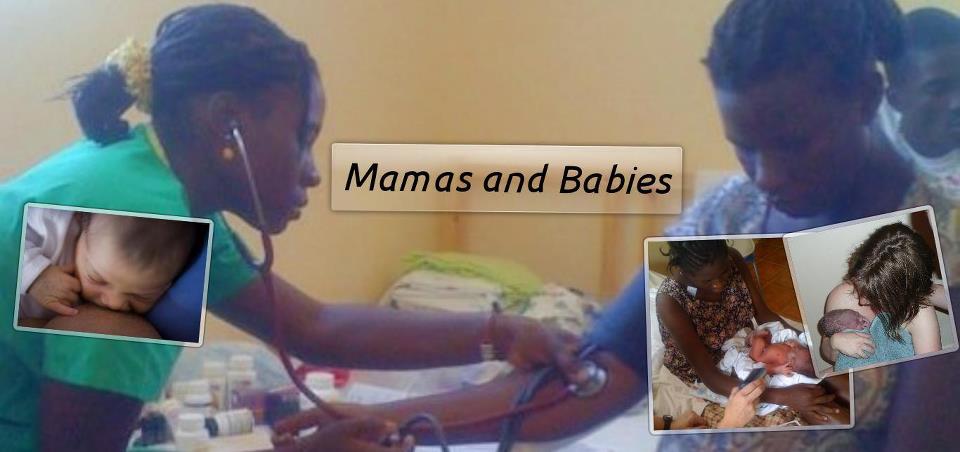
The American Medical Association would like all Americans to believe that the only safe place to birth a baby is in the hospital, so that's what they're telling us, and have been telling us for generations now. In July 2008 the AMA issued a resolution asking for legislation against home births and Certified Professional Midwives (or "lay" midwives). They are trying to take away our right to birth at home. Why? Ricki Lake and Abby Epstein released an incredible documentary film
The Business of Being Born, in which they compared home birth to hospital birth, and the film has become a sneak hit nationwide. The AMA has been spooked by the popularity of the film and the resulting increased interest in home birth. The AMA does not profit from home birth. They only make money when people go to the hospital.
DONA International released a
response to the AMA's resolution in August, and their statement mirrors my own feelings on the matter. It's interesting to note that the majority of doulas assist in hospital births, so DONA and its doulas have no financial gain in supporting home birth. What they
do support, however, is each woman's
right to choose.
Ricki Lake also fired back at the AMA in response to the resolution.
The New York Times recently published an article about more women in the New York City area choosing home birth, despite the fact that most homes in NYC are cramped apartments with thin walls. They also found that the majority of women choosing home birth are well-educated professionals, not the old stereotypical granola hippy from yesteryear.
The Salt Lake Tribune published an article on November 20 which discusses data compiled from July 2007 to June 2008 by midwives in Utah. In Utah, midwives licensed to deliver at home are required to keep studious records of the births they attend, and they report those records to a legislative committee. The study shows that more women in Utah are choosing home birth than in previous years. It also lists the statistics reported, and it's very interesting. Please note that the article cites
that about 22% of the women during that time period transferred care to a doctor or to a hospital before, during or after labor either because they had complications that required the switch or they chose to. I met a Utah midwife today who told me that her transfer rate is actually about 7%.
I would like to point out that midwives do not take high-risk patients. If a pregnancy or labor becomes high-risk at any point, the midwife transfers the patient to an obstetrician. 90% or more of pregnancies are low-risk. Grantly Dick-Read in his book
Childbirth Without Fear stated that 95% of pregnancies are low-risk, so 90% is conservative compared to Dr. Dick-Read's statement. This means that theoretically, 90% or more of babies born could be born at home with no complications. Currently in Utah, about 1% of babies are born at home.
On average, home birth costs $1,900 compared to $8,500 for a low-risk, vaginal birth in the hospital. In the current downward trend of the economy and expensive health insurance premiums and many Americans not having any health insurance at all, doesn't it also make fiscal sense to birth at home?
For centuries women have given birth at home. The move to the hospital didn't take place until early in the 20th century. When that shift took place there was a horrific upturn in maternal and fetal death because of the unsanitary conditions in the hospitals. Doctors would often go straight from the morgue to the delivery room and pass on all kinds of disease to the mother and baby. Granted, hospitals today are much more sanitary than they were at that time, but they are still rampant with disease and germs and serve as breeding grounds for stronger germs than we've ever seen before. Are they really any safer than home?
Even now when birthing in a hospital, women are exposed to unnecessary interventions. To cite just one example: a woman in labor goes to the hospital but she is in the early stages. The staff and Dr. decide that she is not progressing well enough on her own. They give her pitocin to augment and speed up her labor. The contractions get so strong and close together because of the pitocin that she can't handle the intensity and asks for pain relief. An epidural is given which relieves the pain but slows the labor to a crawl. The fetal heart rate shows distress as a result of the medication and they worry about the baby's well-being, and end up doing a cesarean. What could have been an uncomplicated vaginal birth at home without intervention suddenly became high-risk and resulted in major surgery.
Obstetricians are, by trade, surgeons. They are trained to handle true emergencies. The growing trend, however, is to treat all pregnancies as a possible emergency. Midwives are not the medieval witches many people make them out to be. They are trained specifically for and highly skilled in handling low-risk pregnancies and births. They generally treat pregnancy and birth as a natural process rather than an imminent danger.
When birthing at home a woman is allowed to progress at her own natural rate, because women's bodies were made to birth babies and can do it beautifully on their own. She is in a place that is comfortable and feels safe to her. She has specialized, medically trained and certified professionals attending to her needs, monitoring her and the baby's status and ensuring that all is going well. Everyone that I have met or heard of who has had a home birth has loved it and has been grateful they made that choice.






.JPG)









